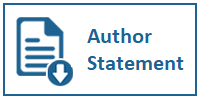The Visualization of Spirits in The Digital World as Creative Commodities in Indonesia
DOI:
https://doi.org/10.31937/ultimart.v16i2.3427Abstract
This study analyzes the visualization process of spirits in the supernatural world that are seen by humans in the physical world through digital contents as creative commodities. Spirit content is still promising as a creative commodity in Indonesia. This content has a lot of curious fans because it can be facilitated visually. The content, which is believed to have different worlds, is able to unite the physical world and the energy world. The energy world includes the digital world and the supernatural world. Thus, the differences between the worlds are interesting to analyze for creative process development. This study uses the qualitative method, the virtual theory from Rob Shield used to map the position of spirits, humans, and platforms. The communication theory is used to see the visual transfer process to society, and Sasmita explores the signs that appear in the content. The findings indicate that representing intangible entities through locally relevant visual symbols proved beneficial for content creators, enabling the production of innovative content that enhances audience interaction. This was achieved by conveying messages to the audience through the construction of symbols and leveraging visual perception.
Keywords: creative commodities; digital world; spirits content; visual process.
Downloads
Published
How to Cite
Issue
Section
License
Authors retain copyright and grant the journal right of first publication with the work simultaneously licensed under a Creative Commons Attribution-ShareAlike International License (CC-BY-SA 4.0) that allows others to share the work with an acknowledgement of the work's authorship and initial publication in this journal.
Authors are able to enter into separate, additional contractual arrangements for the non-exclusive distribution of the journal's published version of the work (e.g., post it to an institutional repository or publish it in a book), with an acknowledgement of its initial publication in this journal.
Copyright without Restrictions
The journal permits the author(s) to hold the copyright without restrictions and will hold distributing rights without limitations.
The submitted papers are assumed to contain no proprietary material unprotected by patent or patent application; responsibility for technical content and for protection of proprietary material rests solely with the author(s) and their organizations and is not the responsibility of the Ultimart: Jurnal Komunikasi Visual or its Editorial Staff. The main (first/corresponding) author is responsible for ensuring that the article has been seen and approved by all the other authors. It is the responsibility of the author to obtain all necessary copyright release permissions for the use of any copyrighted materials in the manuscript prior to the submission.















